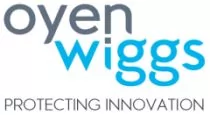The U.S. Supreme Court released a much-anticipated ruling in Google LLC v. Oracle America, Inc., 593 U.S. ____ (2021) on 5 April 2021, ending the decade-long copyright battle between Google and Oracle, two of Silicon Valley's technology powerhouses. This ruling represents the first time that the Court tackled the fair use doctrine in the context of modern computer software. By a 6-2 vote, the Court sided with Google and held that Google's copying of Oracle's code was a permissible "fair use" under U.S. law.
Justice Breyer wrote the majority opinion, joined by Chief Justice Roberts and Justices Sotomayor, Kagan, Gorsuch and Kavanaugh. Justice Thomas wrote the dissenting opinion, joined by Justice Alito. Justice Barrett, who was not yet confirmed when the case was heard in October 2020, did not participate.
The Decade-Long Copyright Battle
This decade-long copyright battle is complicated to say the least. It mixes tough legal concepts with difficult technological details. Some of the relevant difficult details include:
- an application programming interface (API) - "a tool that allows programmers to use prewritten code to build certain functions into their own programs, rather than write their own code to perform those functions from scratch";
- implementing code that "tells the computer how to execute the particular task [that] you have asked it to perform";
- a method call - "a command that corresponds to the specific task [written in implementing code] and calls it up"; and
- declaring code - a link between a method call and its corresponding implementing code - "without that declaring code, the method calls entered by the programmer would not call up the implementing code".
In 2005, Google began negotiations with Sun Microsystems, i.e. Oracle's predecessor, about the possibility of incorporating Sun Microsystems' Java platform, including the APIs, into Google's Android operating system. The negotiations were unsuccessful and Google decided to build its own platform. Google wrote millions of lines of new code but also copied roughly 11,500 lines of Sun Microsystems' declaring code and arranged that code in exactly the same manner as Sun Microsystems had done. The copying was motivated by Google's desire to have millions of programmers, familiar with Java, be able to easily work with Google's platform. In 2010, Oracle bought Sun Microsystems and sued Google for copyright infringement. Google countered that the copied code relates to methods of operations and functions and could not be protected by copyright.
Two key questions arise:
- whether the declaring code and organization of Oracle's API are copyrightable; and
- if so, whether Google's copying of Oracle's API was a permissible "fair use".
Copyright Subject-matter - a Question for Another Day
Instead of deciding fundamentally about copyrightable subject-matter, the majority assumed, "but purely for argument's sake, that the entire Sun Java API falls within the definition of that which can be copyrighted." The majority said that "Given the rapidly changing technological, economic, and business-related circumstances, we believe we should not answer more than is necessary to resolve the parties' dispute."
The dissenting opinion criticized the majority for skipping over the question of copyrightable subject-matter. "The Court wrongly sidesteps the principal question that we were asked to answer: Is declaring code protected by copyright? I would hold that it is." The dissenting opinion added at the end that "The majority purports to save for another day the question whether declaring code is copyrightable. The only apparent reason for doing so is because the majority cannot square its fundamentally flawed fair-use analysis with a finding that declaring code is copyrightable."
This aspect of the ruling may come as a disappointment to copyright lawyers who were hoping for a more sweeping ruling on the extent to which software should be afforded copyright protection in the first place.
Fair Use - "the purpose and character of Google's copying was transformative"
Similar to Canada' fair dealing analysis, the U.S. fair use analysis involves the consideration of several factors. The four factors set forth in the fair use statute include: (i) the nature of the copyrighted work, (ii) the purpose and character of the use, (iii) the amount and substantiality of the portion used, and (iv) market effects.
When conducting the fair use analysis, the majority acknowledged that "The fact that computer programs are primarily functional makes it difficult to apply traditional copyright concepts in that technological world." Applying the principles of the precedents and Congress' codification of the fair use doctrine, the majority concluded that "where Google reimplemented a user interface, taking only what was needed to allow users to put their accrued talents to work in a new and transformative program, Google's copying of [Oracle's] Java API was a fair use of that material as a matter of law."
The dissenting opinion suggested that "the majority wrongly conflates transformative use with derivative use" and "transforms the definition of 'transformative' [to mean] - at least for computer code - a use that will help others 'create new products'". The dissenting opinion cautioned that the new definition of "transformative" may "eviscerate Congress' considered policy judgment."
Potential Effect on Software Innovation
This ruling will likely have a significant effect on software innovation. Google views this ruling as a victory for the software industry as a whole. Its senior vice president for global affairs said in a that "[the] Supreme Court decision in Google v. Oracle is a big win for innovation, interoperability & computing." This is an exciting time for software innovation and we eagerly wait to see how this ruling may practically change how software innovation will be developed.
Implications in the Canadian Context
It is interesting to consider how this case might have been decided had it been brought in Canada instead of in the U.S. The fair dealing exception under the Canadian Copyright Act is applicable to a closed list of specific activities: research, private study, education, parody, satire, criticism or review, and news reporting. If an activity does not fall within this specific list, it cannot qualify as fair dealing. Here, Google's activity in copying the declaring code was not for any of these specifically enumerated purposes but rather was for the purpose of making a competitive software product. As such, Google likely would not be able to rely on the fair dealing exception to avoid copyright infringement in Canada.
This means that in a Canadian context, the evaluation of whether or not the code copied by Google was copyrightable would likely be determinative of the outcome of the case. In that regard, the Canadian courts would be likely to find the analysis of the dissenting opinion persuasive in analysing whether the copied code was copyrightable subject-matter. Similar to the U.S., the Canadian Copyright Act expressly includes "computer programs" within the scope of literary works protected by copyright. Additionally, the Canadian courts are careful to protect the skill and judgment of programmers in the development of the specific language used to develop their code, even though the code may carry out certain functional activities. So this case might have reached an opposite outcome had the action been brought in Canada.
**This article was originally published by The Lawyer's Daily (www.thelawyersdaily.ca) a division of LexisNexis Canada Inc.
U.S. Supreme Court Rules Google's Copying Of Oracle's Code Of Permissible "Fair Use"
The content of this article is intended to provide a general guide to the subject matter. Specialist advice should be sought about your specific circumstances.


